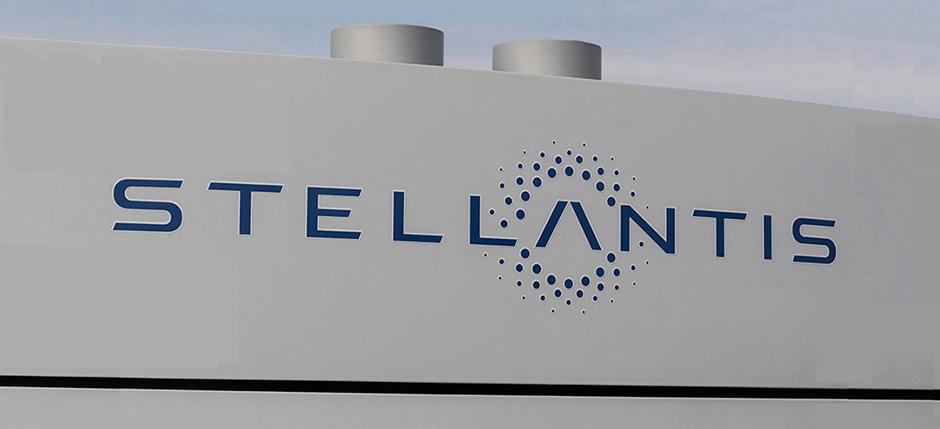

May 2, 2022
Major Investments Secure Automotive Manufacturing Futures for Windsor and Brampton
Province’s run of landmark investments continues as Stellantis to make Ontario, Canada a hub for building the car of the future through modernized assembly plants and new R&D centres
WINDSOR – Ontario is quickly becoming a leader in developing and building the car of the future by attracting a $3.6 billion investment from Stellantis in the automaker’s Windsor and Brampton plants. These investments will accelerate the creation of one of the most vertically integrated electric vehicle supply chains in North America.
Stellantis will retool and modernize the plants in Windsor and Brampton, converting them to flexible, multi-energy vehicle assembly facilities ready to produce the electric vehicles of the future. The company will also build two new research and development centres focusing on electric vehicles and EV battery technology.
Stellantis will build a new, flexible, multi-energy vehicle assembly line at its Windsor plant. This strategic retooling will diversify the company’s capacity by introducing battery-electric or hybrid models to the production line to meet growing consumer demand for low-emissions vehicles.
“These investments re-affirm our long-term commitment to Canada and represent an important step as we move toward zero-emission vehicles that deliver on our customers’ desire for innovative, clean, safe and affordable mobility,” said Mark Stewart, Chief Operating Officer, FCA – North America. “We’re grateful to both the Federal and Provincial governments for their shared vision to create a sustainable future. And to Unifor and our workforce for their support in helping ensure the viability of our Canadian operations for the long-term.”
Stellantis will also modernize its Automotive Research and Development Centre in Windsor by expanding and building two Centres of Competency. The Electric Vehicle and Battery Pack Testing Centres of Competency will establish Ontario as a major R&D hub for the company across all stages of production – from design to development. In addition to R&D, the centres will provide major opportunities for local talent, universities, colleges, and start-ups to participate in the development of Ontario’s EV ecosystem. The hubs will be central to Stellantis’ R&D operations in North America and serve the company’s worldwide needs for technology, process and product development.
At its Brampton Assembly Plant, Stellantis will install a flexible assembly line capable of producing battery-electric and hybrid vehicles. This overhaul will diversify the automaker’s capacity to meet growing consumer demand for low-emission vehicles.
Stellantis is emerging as a trailblazer in creating an integrated supply chain and EV ecosystem in Ontario through EV assembly, cutting-edge R&D assets, and battery cell manufacturing. Its recent investments totaling almost $6 billion will help transform the province’s auto industry. This includes the company’s recently announced joint investment with LG Energy Solution, Ltd. of $5 billion to build Ontario’s first large-scale electric vehicle battery manufacturing plant in Windsor.
Ontario continues to be a destination of choice for major investments due to its clean and competitive electricity network, reduction in red tape, and status as one of the top auto-producing jurisdictions in North America.
Quick facts
-
Over the past 18 months, the automotive sector in Ontario has seen almost $14 billion in investments for new vehicle production mandates and battery manufacturing.
- More than $7 billion of these investments is in transformative hybrid and electric vehicle production at Ontario assembly plants.
-
Ontario has committed $56.4 million over the next four years through the Ontario Vehicle Innovation Network (OVIN) to support innovation and transformation in our auto tech system.
-
Ontario has 12 universities and 24 colleges with auto research and training programs, with over 63,500 science, technology, engineering and mathematics (STEM) graduates per year.
-
The province is home to more than 300 companies and organizations pioneering connected and autonomous vehicle technologies.
-
This investment will accelerate Ontario’s 10-year plan Driving Prosperity ― The Future of Ontario’s Automotive Sector. Phase 2 of Driving Prosperity demonstrates the government’s commitment to transform the province’s automotive supply chain to build the cars of the future including the production of battery electric and hybrid vehicles, EV battery production, and increasing exports of Ontario-made auto parts and innovations.
Related sectors
Media Contacts
Lauren Nucciarone
International Marketing Unit, Ministry of Economic Development, Job Creation and Trade
INVEST ONTARIO. HERE TO HELP.